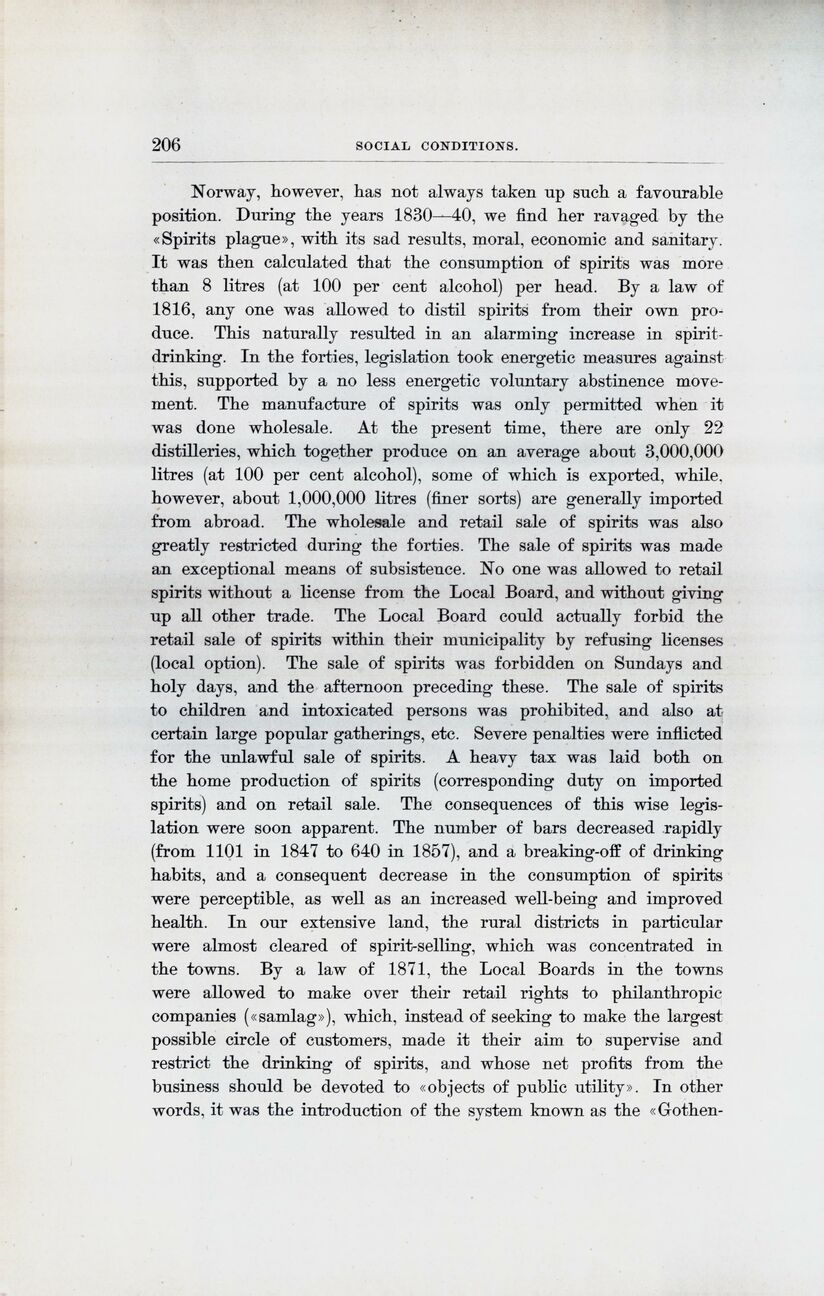
Full resolution (JPEG) - On this page / på denna sida - Social Conditions, by H. E. Berner

<< prev. page << föreg. sida << >> nästa sida >> next page >>
Below is the raw OCR text
from the above scanned image.
Do you see an error? Proofread the page now!
Här nedan syns maskintolkade texten från faksimilbilden ovan.
Ser du något fel? Korrekturläs sidan nu!
This page has been proofread at least once.
(diff)
(history)
Denna sida har korrekturlästs minst en gång.
(skillnad)
(historik)
Norway, however, has not always taken up such a favourable
position. During the years 1830—40, we find her ravaged by the
«Spirits plague», with its sad results, moral, economic and sanitary.
It was then calculated that the consumption of spirits was more
than 8 litres (at 100 per cent alcohol) per head. By a law of
1816, any one was allowed to distil spirits from their own
produce. This naturally resulted in an alarming increase in
spirit-drinking. In the forties, legislation took energetic measures against
this, supported by a no less energetic voluntary abstinence
movement. The manufacture of spirits was only permitted when it
was done wholesale. At the present time, there are only 22
distilleries, which together produce on an average about 3,000,000
litres (at 100 per cent alcohol), some of which is exported, while,
however, about 1,000,000 litres (finer sorts) are generally imported
from abroad. The wholesale and retail sale of spirits was also
greatly restricted during the forties. The sale of spirits was made
an exceptional means of subsistence. No one was allowed to retail
spirits without a license from the Local Board, and without giving
up all other trade. The Local Board could actually forbid the
retail sale of spirits within their municipality by refusing licenses
(local option). The sale of spirits was forbidden on Sundays and
holy days, and the afternoon preceding these. The sale of spirits
to children and intoxicated persons was prohibited, and also at
certain large popular gatherings, etc. Severe penalties were inflicted
for the unlawful sale of spirits. A heavy tax was laid both on
the home production of spirits (corresponding duty on imported
spirits) and on retail sale. The consequences of this wise
legislation were soon apparent. The number of bars decreased rapidly
(from 1101 in 1847 to 640 in 1857), and a breaking-off of drinking
habits, and a consequent decrease in the consumption of spirits
were perceptible, as well as an increased well-being and improved
health. In our extensive land, the rural districts in particular
were almost cleared of spirit-selling, which was concentrated in
the towns. By a law of 1871, the Local Boards in the towns
were allowed to make over their retail rights to philanthropic
companies («samlag»), which, instead of seeking to make the largest
possible circle of customers, made it their aim to supervise and
restrict the drinking of spirits, and whose net profits from the
business should be devoted to «objects of public utility». In other
words, it was the introduction of the system known as the
<< prev. page << föreg. sida << >> nästa sida >> next page >>